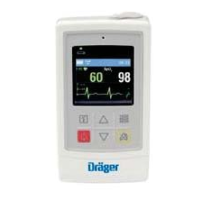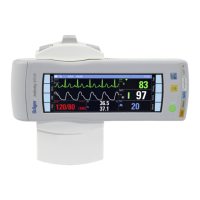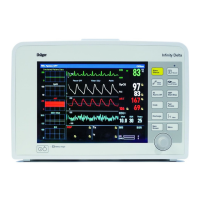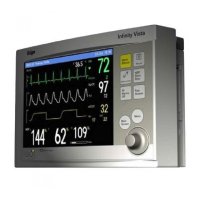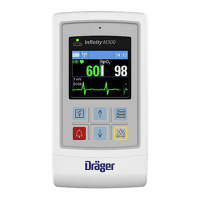Page 10-2 Infinity Gamma Series VF4
Overview
The monitor provides an option for ST segment analysis, avail-
able for the adult and pediatric monitoring modes. When acti-
vated, this option analyzes the patient’s normal QRS pattern and
determines values for ST segment deviation (i.e., how far the ST
segment of the QRS complex is above or below the isoelectric
line). ST segment analysis is performed on the two leads selected
for ECG monitoring. The default leads for ST analysis are lead II
and V (with a 5- or 6-lead cable), the same default leads assigned
for Arrhythmia monitoring. Upper and lower limits are user-
selectable and the monitor triggers an alarm in case of limit viola-
tion.
When you connect the monitor to a patient, the monitor begins
the process of learning the patient’s dominant ECG beat pattern:
this pattern serves as a baseline for determining subsequent nor-
mal beats. The monitor stores an average ST complex that is
derived from those beats classified as normal. In order to obtain
an ST segment deviation value, the monitor then compares the
isoelectric and the ST segment level of the average complex. The
ST segment deviation represents the difference in voltage
between the isoelectric and the ST segment level of the average
complex. The monitor displays the ST segment deviation in the
ST parameter box. The value is updated every 15 seconds.
NOTES:
! You can initiate a Relearn of the ECG reference pattern manu-
ally at any time (see the chapter Arrhythmia).
! ST deviation values are displayed in mm (default) or mV.
Changing the units of measurement is a password-protected
function. For information, contact your Biomedical personnel.
! In OR mode (see the chapter Multigas), the ST parameter box
is not displayed and deviations in the ST segment are neither
monitored nor trended.
WARNIN G: The ST algorithm has been tested for the
accuracy of detecting ST segment deviations. The signif-
icance of the ST segment deviations must be determined
by a clinician.
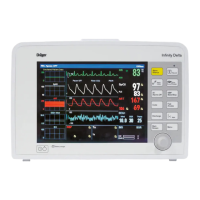
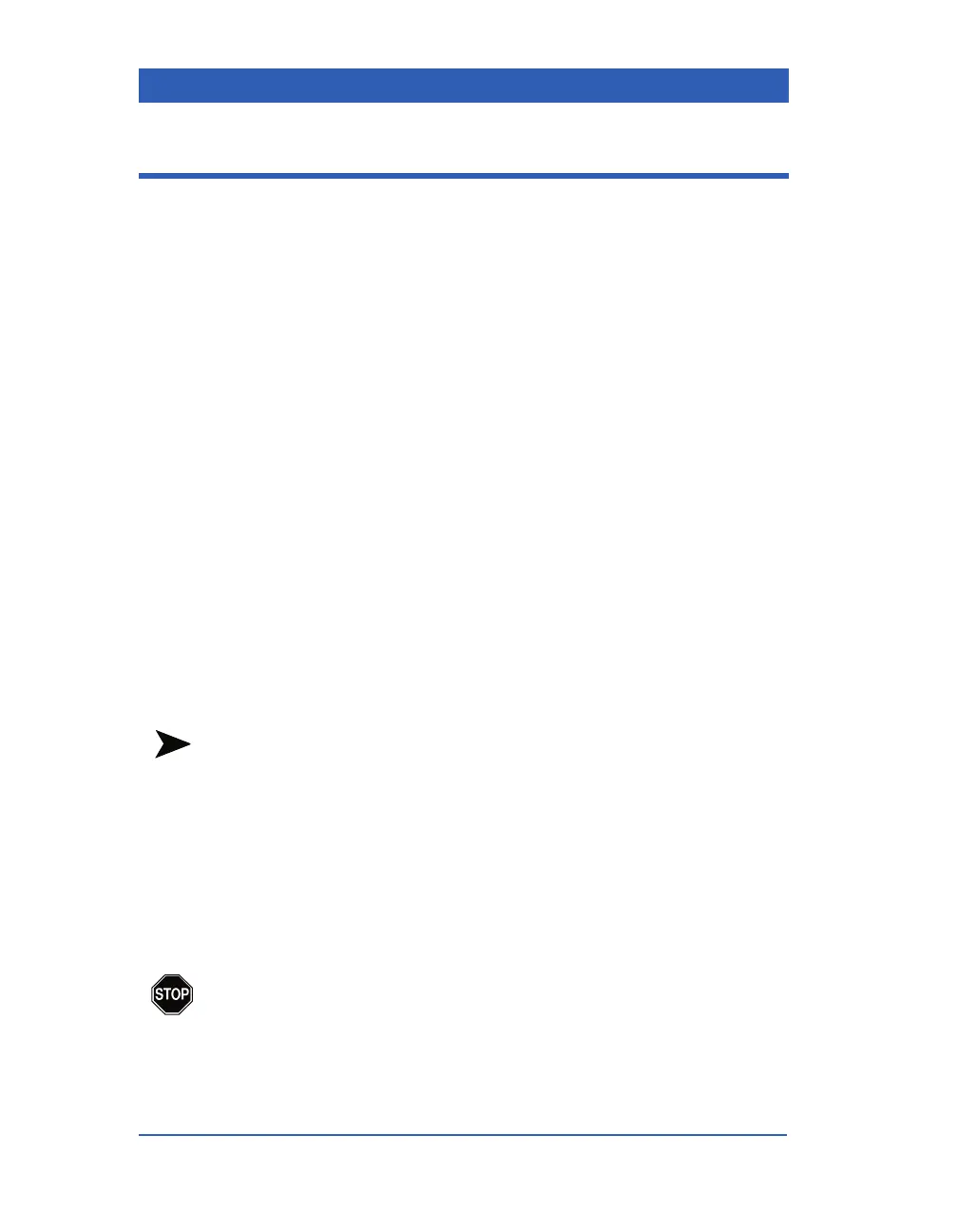